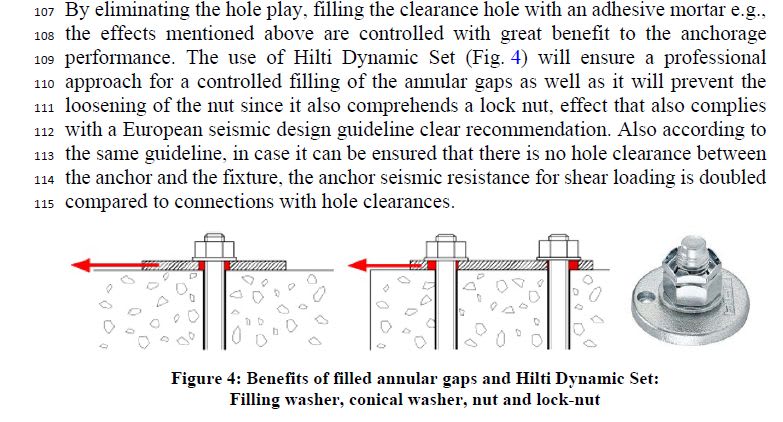When the grout is confined ,the compressive str. of the grout increases 5 times and EC allows the use of a factor 3.33 .
- I have no idea for AISC address or condone this but , EC allows and has certificate..
- The proposed mortar has Compressive strength (tcure = 28d) 110 N/mm2 EN ISO 604 / HN569..The leaflet of the proposed adhesive is attached..
The OP did not mention the origin of shear load and size of the anchor rods..
You can imagine that , under shear loading, if the force exceeds the static friction between the concrete and the base plate, the base plate will slip by an amount equal to the annular gap then the forces will be transferred to anchor rods and amplified due to a hammer effect. Filling the annular space will certainly increase the total resistance and improve the anchor rod behavior ( no cantilever effect )..
My browser does not support ASK HILTI COM. But you may ask to local representative or ask.hilti.com
IMO, if the shear force for Seismic loading, i would prefer annular gap and not weld the washer or fill the gap to mobilize the shear resistance of all anchors.. But this is my personnel opinion..
I think this subject is worth to dig more and would like to hear the opinions of other engineers having seismic design experience .

